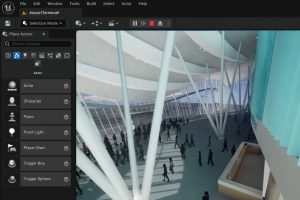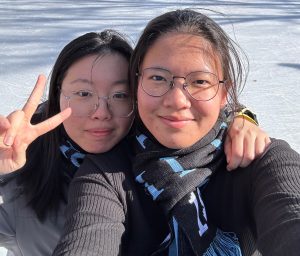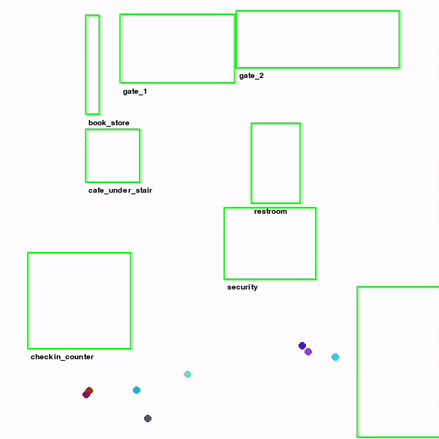
COVID-19 originally spread to the U.S. from travelers on commercial flights. That’s why two Johns Hopkins computer science students have developed a new, ultra-realistic simulation to illustrate the rapid spread of airborne viruses like COVID-19 in an airport terminal and demonstrate the efficacy of various countermeasures, like masking and social distancing. Their goal is to educate people and reduce the risk of future travel-related outbreaks, as well as to inform future airport designs.

Michelle Wang and Alisa Yang.
Third-year computer science students Alisa Yang and Michelle Wang partnered with Amazon Web Services to develop the simulation of passengers moving through an airport terminal. To create it, they used the AWS SimSpace Weaver, a software tool that enables large-scale entity simulation.
The pair will present its work on May 1 as part of the Whiting School of Engineering’s annual Design Day, which showcases the innovative work of Hopkins engineering students.

The team’s algorithmic visualization.
The simulation is driven by an algorithm comprising various disease variables and movement logic. Users can input their own values for variables—like a particular COVID-19 variant’s R-naught or degradation and acceleration rates—or they can watch how presets, like the well-known Omicron and Delta variants, spread.
The students’ highly realistic visualization, which is powered by the latest iteration of the Unreal Engine, is currently limited to one airport scenario, but the algorithm itself can be customized for any number of specific airports.
“Public spaces have been an enigma in the quest for understanding how infectious respiratory diseases are spread,” says associate research scientist Anton Dahbura, who spearheaded the larger Delineo Disease Modeling Project in partnership with AWS, the Johns Hopkins Institute for Assured Autonomy, and the Malone Center for Engineering in Healthcare.
“This project will be helpful for future designs of airports and other public spaces,” he says. “The work also provides a vivid visualization for people to better assess their risk of infection while traveling. We’re grateful to our partners at AWS for providing access to the resources to make the project possible and for their valuable assistance throughout the project.”
See their simulation at work here or watch the video below for more on the Whiting School’s work with the AWS SimSpace Weaver:
